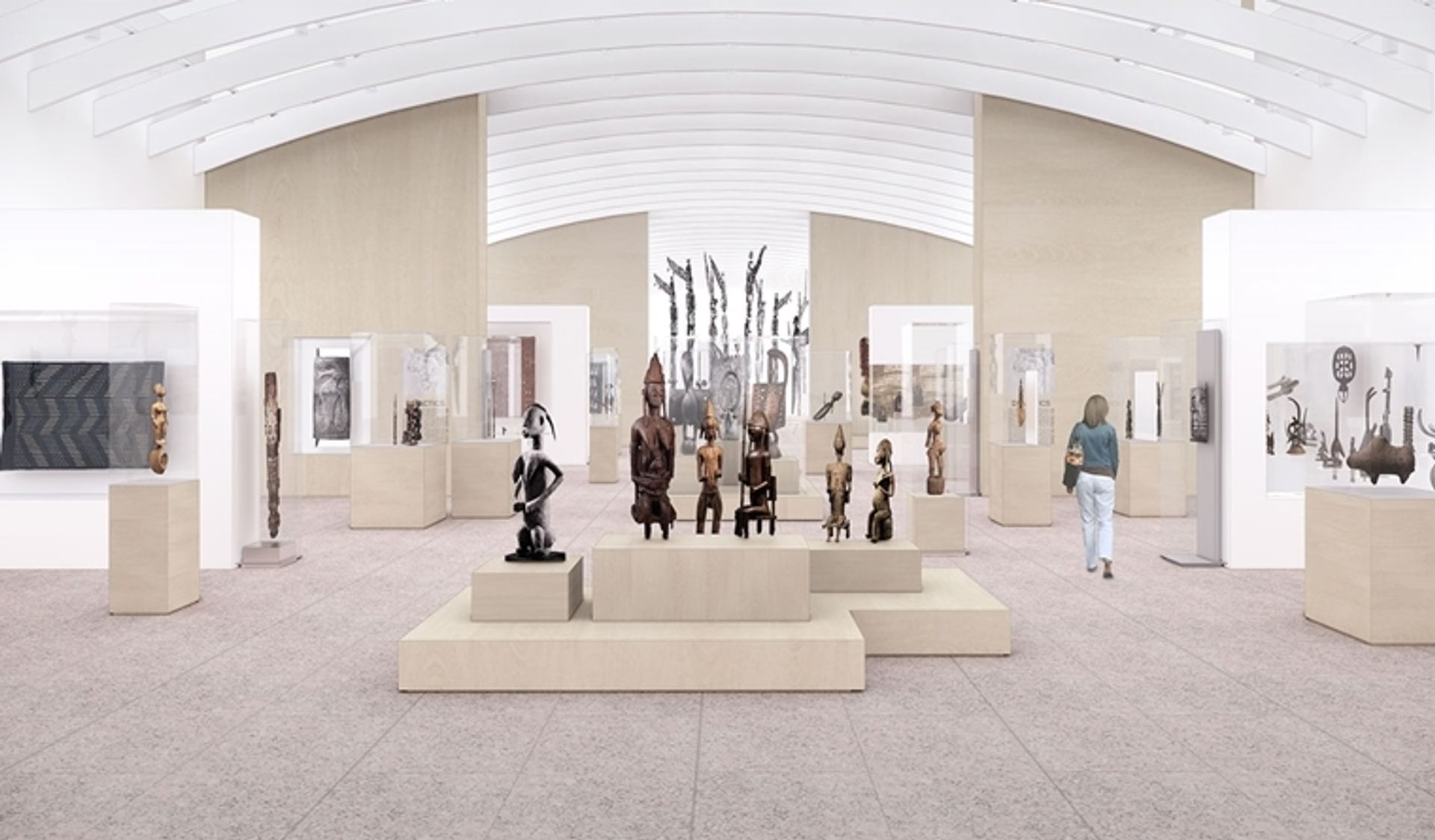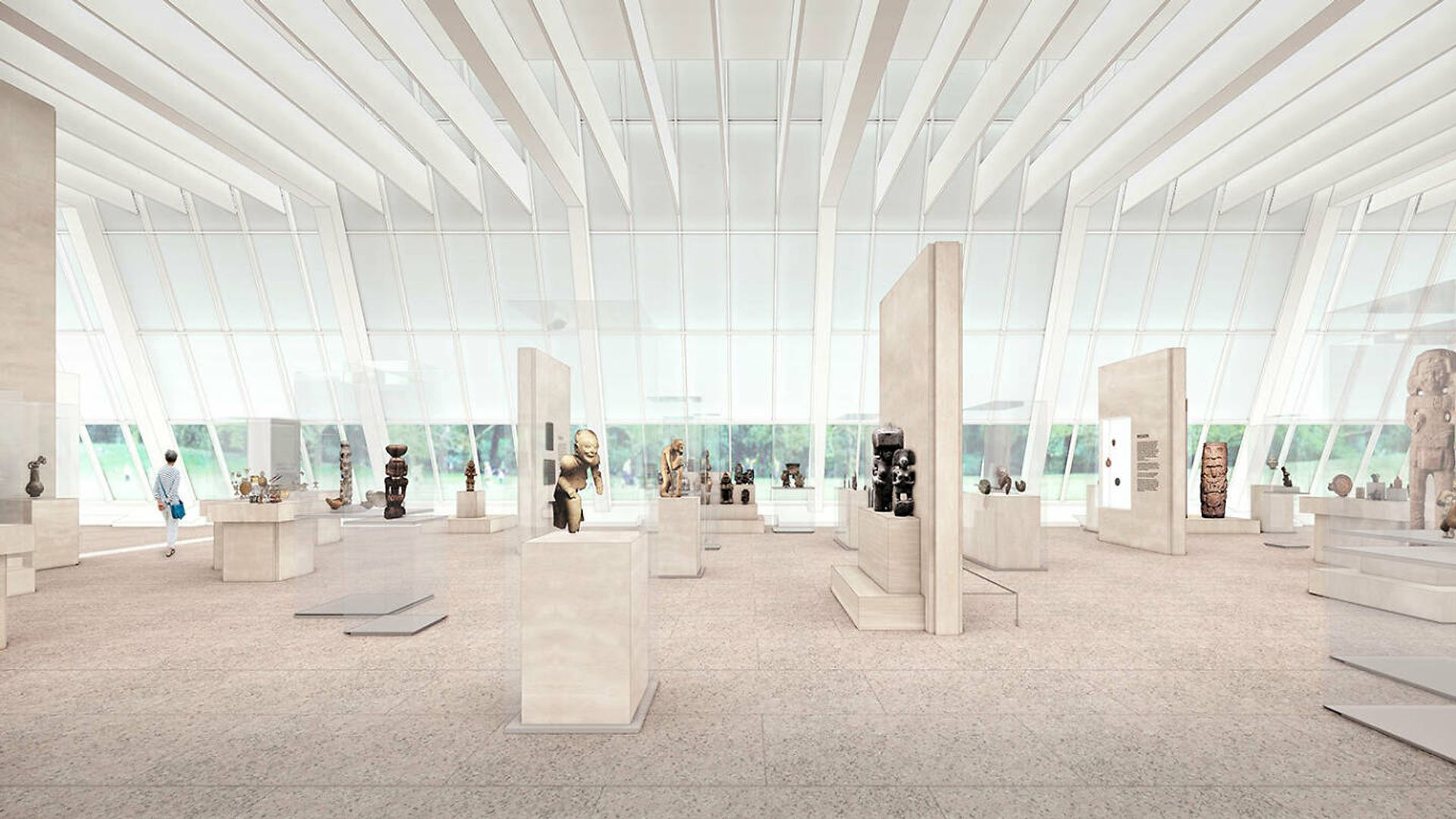This week, the Metropolitan Museum of Art celebrated the beginning of a $70m project to reinvigorate its African, ancient American and Oceanic art galleries, housed in the Michael C. Rockefeller wing of the museum. The 40,000 sq. ft galleries, which were inaugurated in 1982, will be reworked to better contextualise and exhibit the collection, and will aim to address the “complex story of cultural development over the last 5,000 years, as well as general issues regarding trade, governance, ideology and relationships”, says Max Hollein, the museum's director.
The Met has developed the project with the New York-based architect Kulapat Yantrasast of the firm wHY. Part of the overhaul involves the installation of a glass wall to better illuminate the galleries and the addition of new fixtures to increase the display of artworks across the space. When the wing reopens in 2024, it will span nearly 3,000 works and include new audio, text and video features devised in collaboration between curators and several consultants, such as the archaeologist Oswaldo Chinchilla Mazariegos, a professor of anthropology at Yale University, who will advise on pre-Columbian objects.
Hollein says the renovation marks a milestone for the Met, which has unparalleled holdings of art from sub-Saharan Africa, Oceania and the ancient Americas. “There are objects in this collection from sub-Saharan Africa that relate to some 206 distinct cultures identified within 38 nations; Oceania, which is a vast area, is represented by 223 cultures and 31 nations; and works created in the Americas up to the period of colonisation include 234 distinct cultures and 21 nations,” he says.

Rendering of the renovated wing Courtesy wHY Architects and the Metropolitan Museum of Art
During a groundbreaking event on 13 December, Mary Rockefeller, the daughter of Nelson Rockefeller, who had a pivotal role in the founding of the galleries, recounts that her father watched his mother assemble a collection of African sculpture and Indigenous art. “He took in her appreciation for the directness, power and beauty of these early forms of non-Western art, and I think this experience and her encouragement gave him courage to find his own mind and heart in terms of forming his collection,” she says. “His interest soon spread from African to pre-Columbian art, and finally to the art of the Pacific Islands.”
As a young board member of the Met in the 1930s, Nelson Rockefeller encouraged trustees to begin collecting Indigenous and African art, with the aim of legitimising these overlooked departments. He offered his collection to the museum at that time but the board of trustees turned down his proposal and directed him to the ethnographic department of the American Museum of Natural History. Undeterred, he continued collecting and formed the Museum of Indigenous Art, which was later given the dated title Museum of Primitive Art, in 1956 in a Manhattan townhouse.
When the Met announced it would create dedicated galleries for African, Indigenous and Oceanic art in 1969, Rockefeller signed an agreement to transfer his collection to the museum, a process that began after his own museum closed in 1976. The wing that houses the galleries was named after his son, who disappeared during a collecting expedition in New Guinea in 1961 in which he intended to study the Asmat people (it has been speculated that he drowned, suffered exposure, or was cannibalised by the Asmat).
“The Met’s eventual acceptance and celebration of non-Western and Indigenous art marked an important turning point in its global vision, and significantly influenced the acceptance and worldwide standing of these rich artistic traditions,” Mary Rockefeller says. “Besides holding and exhibiting these magnificent treasures in a beautiful new design, these carefully constructed galleries will offer viewers a new vision, one that is about creating and expanding personal world views.”

Rendering of the renovated gallery Courtesy wHY Architects and the Metropolitan Museum of Art
The Met has also opened a landmark long-term exhibition titled The African Origin of Civilisation, which juxtaposes ancient Egyptian works with masterpieces from west and central Africa. Among some of the notable pairings, an exquisitely sculpted fragment of an Egyptian queen’s face is shown alongside a 16th-century ivory mask from Benin, a talisman once worn by a king depicting the semi-divine political and mystical figure Idia; lion and leopard figurines interlink the cultures’ reverence for the natural world; and a blue hippopotamus—the Met’s unofficial mascot and a protection figure often found in ancient Egyptian tombs—is paired with a Malian ceremonial hippo made from wood, earth and the blood of sacrificial offerings, a representation of esoteric knowledge in animist religions.
- The African Origin of Civilization is on long-term view at the Metropolitan Museum of Art, New York


